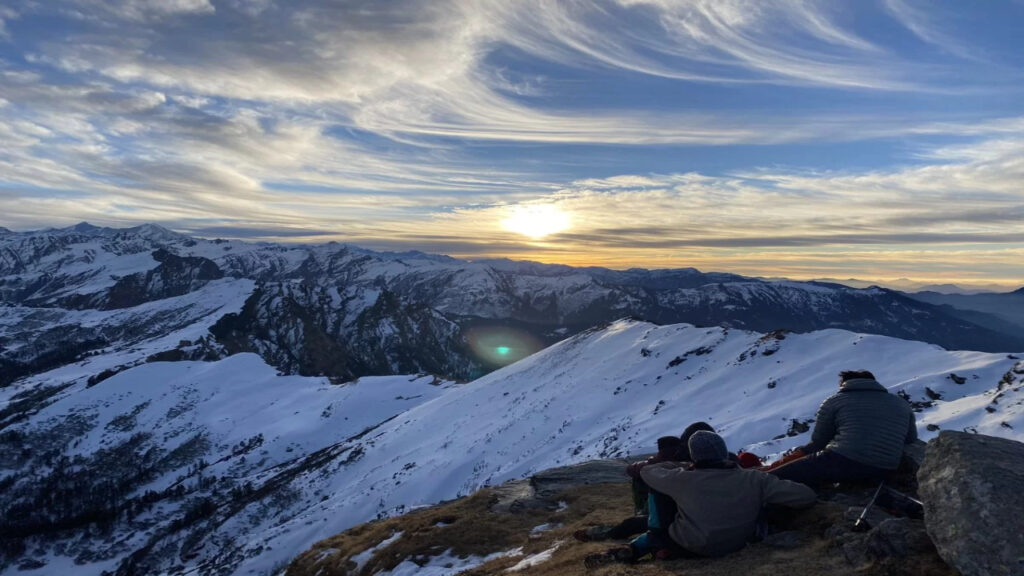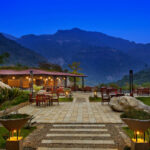What should you carry while you’re out trekking in Kedarkantha? It’s highly recommended that you carry certain things with you, both to ensure your safety and to make your trip more enjoyable. Here are some things to carry on Kedarkantha trek!
1) Sleeping Bag
When planning a Kedarkantha Trek, one of the most important items to carry is a sleeping bag. This can be a down or synthetic filled bag, depending on your personal preference.
A sleeping bag is essential for keeping you warm at night when temperatures drop in the mountains. It’s important to make sure your sleeping bag is rated for low temperatures, so that you stay warm and comfortable while camping out.
You also need to make sure your sleeping bag is lightweight and compact enough to fit into your backpack. You’ll be carrying all your gear with you, so every ounce counts! It’s recommended to go with a lightweight sleeping bag that packs down small.
Finally, make sure your sleeping bag has a weather-resistant outer shell. This will help keep you dry during those rainy mountain nights. Look for one with a rip-stop material, which will add extra durability. When selecting your sleeping bag, remember that comfort and warmth should come first. After all, getting a good night’s sleep is essential for an enjoyable and successful trek!
2) Camera
If you’re looking to capture the stunning views of the Kedarkantha trek, then a camera is an absolute must-have. Whether you’re a seasoned photographer or just want to take some memories back home, you should definitely bring a camera on your Kedarkantha trek. You’ll get plenty of opportunities to snap breathtaking shots of snow-capped peaks and lush green valleys.
To ensure that you get the best photos possible, bring along a high-quality DSLR or mirrorless camera with a good lens. If you don’t own one, then consider investing in a point-and-shoot camera with a decent zoom lens. You’ll also need a tripod if you want to take long exposure shots or if the lighting is poor. And don’t forget to bring extra batteries and memory cards, as well as any other necessary accessories such as filters.
On your Kedarkantha trek, make sure to take some time to snap photos at each of the viewpoints along the way. Also keep in mind that you’ll be trekking at high altitudes and the weather conditions can be unpredictable. To protect your camera, make sure to keep it in a waterproof case or cover whenever possible.
3) Tent
One of the most important items to bring on a Kedarkantha trek is a tent. Having a good, reliable tent can make all the difference when it comes to staying warm and dry during your trip. Whether you choose to buy one specifically for this trek or you opt to borrow or rent one, make sure that it’s suitable for the type of terrain and weather you’re likely to encounter. Consider factors such as ventilation, waterproofing, durability, and ease of setup when selecting your tent. Also, make sure you have the necessary tools and supplies to keep your tent in good condition, such as stakes, repair kits, and extra groundsheets. With the right tent, you’ll be set up for a comfortable and enjoyable Kedarkantha trek!
4) Water Bottle
One of the most important items to pack for your Kedarkantha trek is a good quality water bottle. Make sure to bring a water bottle that has a wide mouth and can carry at least 2 liters of water. Staying hydrated on your trek is essential, so be sure to keep your water bottle within easy reach and remember to refill it regularly. Bring along a couple of purification tablets or drops just in case you run out of safe drinking water during your journey.
5) Hiking Shoes
When embarking on a Kedarkantha trek, having the right pair of hiking shoes is essential. The terrain on this trek can vary from rocky to muddy and steep, so having a pair of shoes with good grip and support is necessary for your safety.
You’ll want to invest in a good quality pair of shoes that are lightweight, comfortable, and provide the necessary traction. Depending on the season you plan on trekking in, you’ll need to decide whether you want a waterproof or breathable material. Leather boots may be better suited for colder weather while mesh materials may work well during warmer months.
Make sure your shoes fit properly before heading out on your trek. Be sure to break them in before the trek by wearing them around the house or taking short walks outside. Doing so will help avoid any unnecessary blisters or discomfort while out on the trail.



